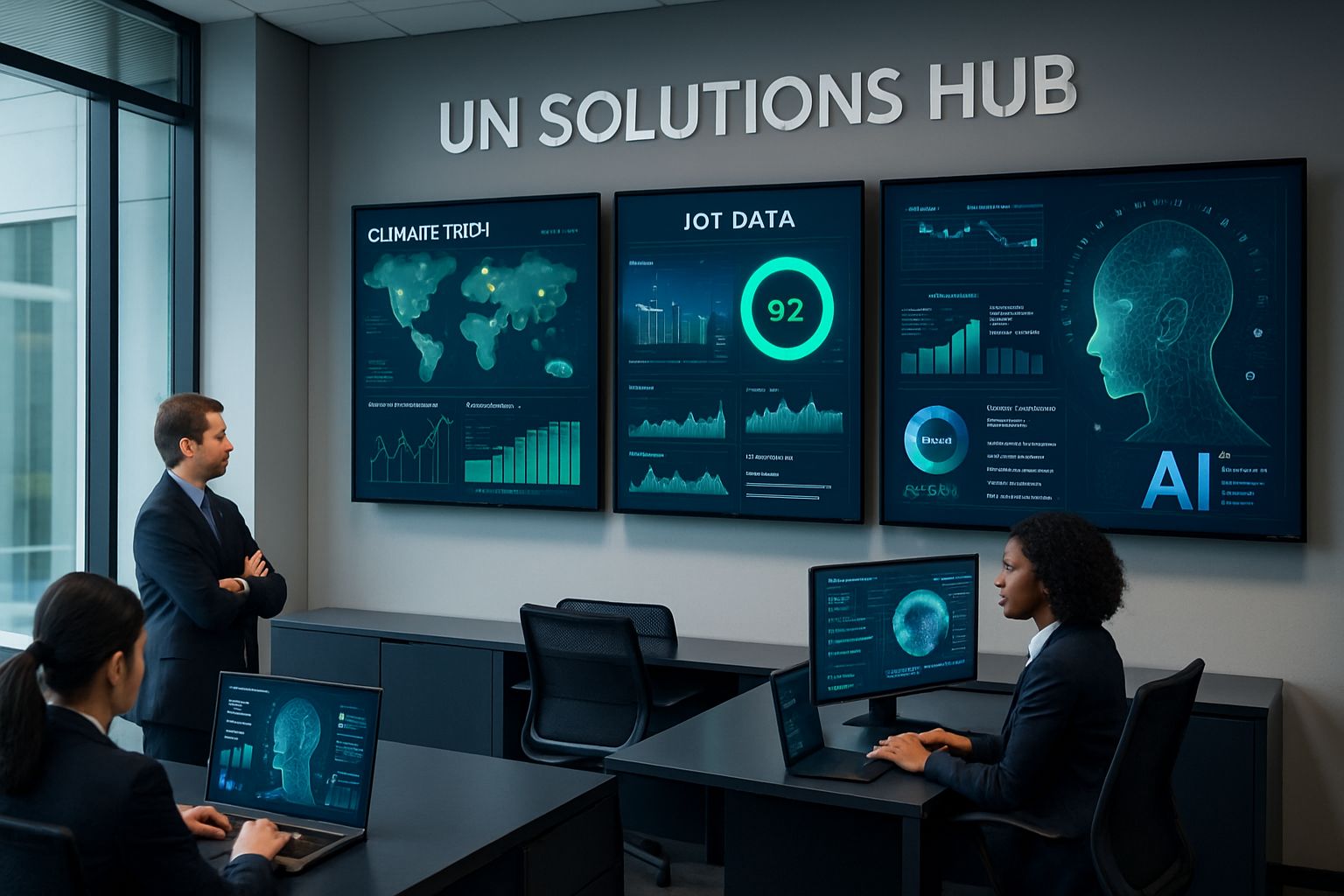
AI CERTS
23 hours ago
Sustainability AI Drives UN Solutions Hub After COP30
Industry voices quickly highlighted practical outcomes. Tuya Smart showcased connected lighting and Home Energy Management Systems. Tencent demonstrated TanLIVE, the backbone architecture for the hub. Moreover, GeSI framed the launch as digital public infrastructure supporting the Paris Agreement. This introduction outlines why the announcement matters, how the ecosystem operates, and what steps follow.

UN Hub Debut Impact
The hub arrived during COP30 and immediately attracted attention. James Grabert called it a “digital bridge” for climate solutions. Consequently, municipal leaders explored dashboards that match verified providers to project needs. GeSI positioned the platform as a global public good, reinforcing inclusion promises.
Essential Launch Statistics Data
Several numbers underscore early momentum:
- Launch date: 13 November 2025 at COP30.
- Technical partner: Tencent, integrating TanLIVE analytics.
- Private participants: Tuya Smart, Gree, LONGi, and WEG.
- Tuya developer accounts: 1,514,000 as of June 2025.
- Product categories connected: over 3,000 on Tuya’s platform.
These metrics reveal scale and ambition. However, the platform’s success depends on governance and verified impact. The next section examines Tuya’s specific contribution.
Tuya's AIoT Contribution
Tuya integrates AI and IoT across homes, buildings, and grids. During launch sessions, the company emphasized Sustainability AI for practical carbon cuts. French pilots showed 25-30 percent household electricity reductions. Furthermore, Tuya committed to publish detailed case data through the hub.
Three deployments illustrate possibilities:
- Xanlite smart lighting reducing peak loads.
- Mazda retail sites optimizing HVAC runtimes.
- Thaleos social housing using automated load shifting.
Consequently, cities exploring similar measures gain template projects inside the hub. Professionals can enhance their expertise with the AI for Government™ certification. That credential strengthens procurement and oversight skills when scaling Sustainability AI solutions.
Tuya’s showcase stresses device interoperability. Additionally, its API layer eases integration with municipal dashboards. These factors improve adoption odds. Nevertheless, vendor-supplied figures still require third-party validation. The following section explores governance questions.
Platform Governance Questions
Every digital public infrastructure faces scrutiny over data stewardship. In contrast to proprietary marketplaces, UNSH claims open verification. Luis Neves declared the hub “backbone” architecture for Paris goals. Nevertheless, detailed access policies remain unpublished.
Stakeholder Reactions Snapshot View
Early feedback mixes optimism and caution:
- CIOs praise unified discovery of Climate Tech portfolios.
- Privacy advocates request clear cross-border data rules.
- Small-city mayors seek affordable onboarding models.
- Investors desire standardized impact measurement frameworks.
Therefore, transparent governance will decide user trust. These considerations directly influence Energy project financing pipelines. The next section evaluates real-world savings claims.
Scaling Real Energy Savings
Quantified impact remains the ultimate metric. Tuya cites 25-30 percent electricity cuts in French homes. Moreover, TanLIVE analytics will host external datasets for comparison. Consequently, third-party evaluators can benchmark project performance.
Several verification methods are emerging. Smart meters stream anonymized usage traces. Additionally, blockchain ledgers record baseline assumptions. Independent auditors cross-check algorithms against field data. Such steps convert Sustainability AI promises into defensible results.
These safeguards build investor confidence. However, scaling requires consistent methodologies across regions. The next section reviews broader infrastructure implications.
Public Infrastructure Perspectives
Digital public infrastructure shapes power balances among states, firms, and citizens. GeSI claims UNSH will remain neutral. Meanwhile, Tencent’s infrastructure dominance raises geopolitical questions. Consequently, multilateral oversight could mitigate concentration risks.
Future Verification Priorities Roadmap
Experts outline three immediate tasks:
- Publish comprehensive data governance charters.
- Establish independent solution certification panels.
- Create multilingual capacity-building resources for smaller jurisdictions.
Joint action on these priorities will support equitable Climate Tech deployment. Subsequently, stakeholders must coordinate implementation timelines. The final section distills next steps.
Next Steps For Stakeholders
Cities should register profiles and outline project needs. Financiers can flag thematic interests, from Energy retrofits to resilient water systems. Solution providers must upload evidence-based case studies. Furthermore, watchdog groups ought to monitor data usage continuously.
Meanwhile, professionals ought to pursue upskilling paths. Sustainability AI expertise aligns with upcoming procurement frameworks. Certification programs reinforce technical literacy and ethical considerations.
These coordinated moves will refine the hub’s value proposition. Consequently, collective governance will shape its long-term legitimacy.
In summary, the UN Solutions Hub emerges as a timely catalyst. It blends Sustainability AI, IoT networks, and Climate Tech matchmaking under one roof. Early Energy savings stories excite policymakers, yet rigorous verification remains crucial. Moreover, transparent governance will protect inclusivity and trust. Readers should explore available certifications and engage with platform pilots.
Continued collaboration can transform COP30 momentum into measurable progress. Therefore, now is the moment to participate, scrutinize, and innovate for a low-carbon future.



